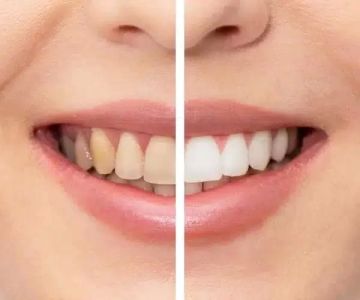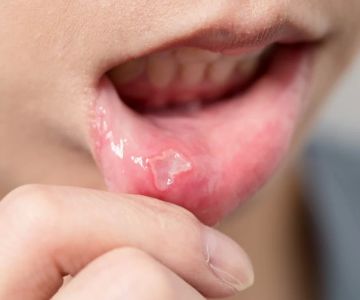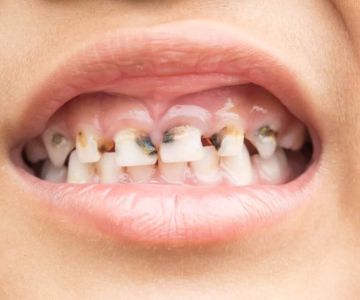
- Common-Causes-of-Toothache-After-Dental-Extraction
- Understanding-the-Types-of-Pain-Experienced
- Detailed-Analysis-of-Specific-Causes
- Managing-and-Relieving-Toothache-Post-Extraction
- When-to-Seek-Professional-Help
1. Common Causes of Toothache After Dental Extraction
Experiencing toothache after dental extraction is a concern that many patients face, often causing anxiety and discomfort. The causes of toothache after dental extraction can vary widely, ranging from normal healing processes to complications requiring professional intervention. Understanding these causes is essential for managing pain effectively and ensuring a smooth recovery.
Firstly, it’s important to recognize that some level of pain is expected after an extraction due to tissue trauma and inflammation. However, when the pain persists or worsens beyond a few days, it could indicate other underlying issues such as dry socket, infection, or nerve irritation. Each of these has unique characteristics that influence the nature of the toothache experienced.
1.1 The Role of Healing and Inflammation
Immediately following extraction, the body initiates an inflammatory response to begin healing. This natural process can cause localized pain, swelling, and sensitivity around the extraction site. Typically, this pain is manageable and subsides within a week. Inflammation stimulates blood flow to the area, promoting tissue repair, but the increased sensitivity often manifests as toothache sensations.
1.2 Complications That Lead to Prolonged Pain
In some cases, the healing process may be complicated by conditions like dry socket (alveolar osteitis), where the blood clot protecting the socket is dislodged or dissolves prematurely. This exposes bone and nerves, causing intense, throbbing pain. Infections and nerve injuries are other contributors that can provoke persistent toothache after extraction.
2. Understanding the Types of Pain Experienced After Extraction
To grasp the causes of toothache after dental extraction fully, it’s useful to differentiate the types of pain patients commonly report:
2.1 Acute Post-Extraction Pain
This pain is sharp and usually peaks within the first 24 to 72 hours. It is mainly due to tissue injury and inflammation. Patients often describe it as throbbing or aching around the extraction site.
2.2 Persistent or Chronic Pain
If pain continues beyond a week or intensifies, it might signal complications such as infection, dry socket, or nerve involvement. This pain can be more localized, severe, and sometimes radiate to nearby areas like the jaw or ear.
2.3 Referred Pain
Occasionally, patients experience pain not only at the extraction site but also in other teeth or parts of the mouth due to nerve pathways. Understanding this referred pain is crucial to avoiding misdiagnosis and improper treatment.
3. Detailed Analysis of Specific Causes
Exploring each cause in more depth helps patients recognize symptoms and decide when professional care is needed.
3.1 Dry Socket (Alveolar Osteitis)
Dry socket is one of the most common causes of severe toothache after dental extraction. It occurs when the protective blood clot that forms in the socket is lost, leaving bone exposed. The exposed bone triggers sharp pain that can start a few days post-extraction and may radiate to the ear or neck. Patients often describe a foul taste or bad odor as accompanying symptoms.
3.2 Infection
Infections develop when bacteria invade the extraction site, causing swelling, redness, pus formation, and persistent pain. Fever and general malaise may accompany the toothache. Prompt treatment with antibiotics and sometimes drainage is necessary to avoid further complications.
3.3 Nerve Injury
During extraction, especially of impacted wisdom teeth, nerves can be irritated or damaged, causing prolonged numbness, tingling, or sharp shooting pain. Although less common, this condition demands careful diagnosis and management by dental professionals.
3.4 Trauma to Surrounding Tissues
The extraction procedure itself may traumatize adjacent teeth, gums, or bone, resulting in temporary pain or sensitivity. This trauma usually resolves with time but can cause discomfort during the early healing phase.
4. Managing and Relieving Toothache Post-Extraction
Effective pain management is essential to patient comfort and recovery. Understanding how to handle different types of toothache after extraction can significantly improve healing experiences.
4.1 Home Care Remedies
For mild to moderate pain, over-the-counter pain relievers like ibuprofen or acetaminophen can reduce inflammation and discomfort. Applying an ice pack intermittently helps minimize swelling. Keeping the extraction site clean with gentle rinsing using warm salt water after 24 hours supports healing and reduces infection risk.
4.2 When to Use Professional Treatments
If pain intensifies or is accompanied by swelling, fever, or bad taste, it’s critical to consult a dentist. Treatment might include cleaning the socket, medicated dressings, or antibiotics. For nerve-related pain, specialized interventions might be necessary.
4.3 Importance of Follow-Up
Regular follow-up visits ensure the extraction site heals properly and help detect complications early. Patients who experience unusual pain patterns should not hesitate to seek advice to avoid worsening conditions.
5. When to Seek Professional Help
Recognizing when toothache after extraction signals a problem rather than normal healing is vital. Signs that require urgent dental consultation include:
- Severe pain starting 3-5 days after extraction
- Persistent swelling or redness
- Fever or general feeling of illness
- Bad taste or discharge from the extraction site
- Numbness or tingling lasting more than a few days
At Dentistry Toothtruth, we offer expert advice, quality dental products, and professional services designed to support your oral health recovery. Whether you’re managing routine post-extraction care or facing complications, our resources can guide you to the best solutions tailored to your needs.
Ultimately, understanding the causes of toothache after dental extraction empowers you to take control of your recovery. With attentive care and timely professional support, most post-extraction toothaches can be effectively managed, ensuring you return to comfort and health sooner.







 Westgate Dental Arts
Westgate Dental Arts Coventry Family Dental
Coventry Family Dental Familia Dental
Familia Dental Dr. Daniel S. Fife, DDS
Dr. Daniel S. Fife, DDS Dentistry At Suburban Square: Michael I. Wollock, DMD
Dentistry At Suburban Square: Michael I. Wollock, DMD Comfort Care Dental
Comfort Care Dental The Importance of Oral Health Education During Pregnancy for a Healthy Pregnancy
The Importance of Oral Health Education During Pregnancy for a Healthy Pregnancy Why Skipping Dental Checkups Can Lead to Bigger Oral Health Problems
Why Skipping Dental Checkups Can Lead to Bigger Oral Health Problems Advantages of Porcelain Dental Restorations
Advantages of Porcelain Dental Restorations Best Tips for Brushing Your Teeth Properly for Healthy Gums: Essential Techniques for Oral Health
Best Tips for Brushing Your Teeth Properly for Healthy Gums: Essential Techniques for Oral Health How Can Diabetes Cause Tooth and Gum Problems? Preventing and Managing Oral Health Issues
How Can Diabetes Cause Tooth and Gum Problems? Preventing and Managing Oral Health Issues Healthy Habits for Promoting Good Oral Health and Hygiene: Tips for a Healthy Smile
Healthy Habits for Promoting Good Oral Health and Hygiene: Tips for a Healthy Smile